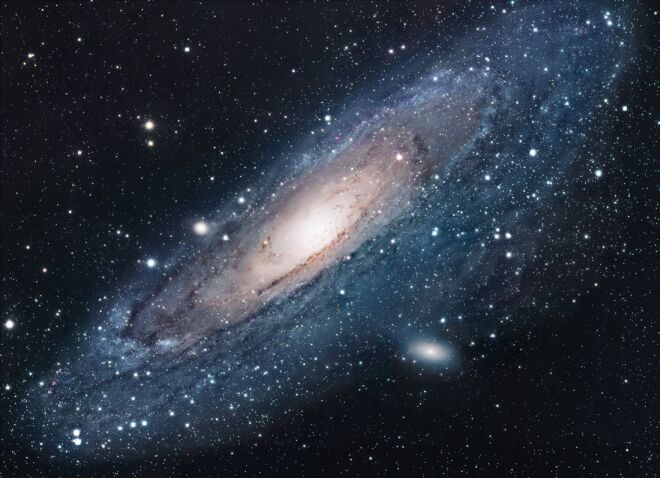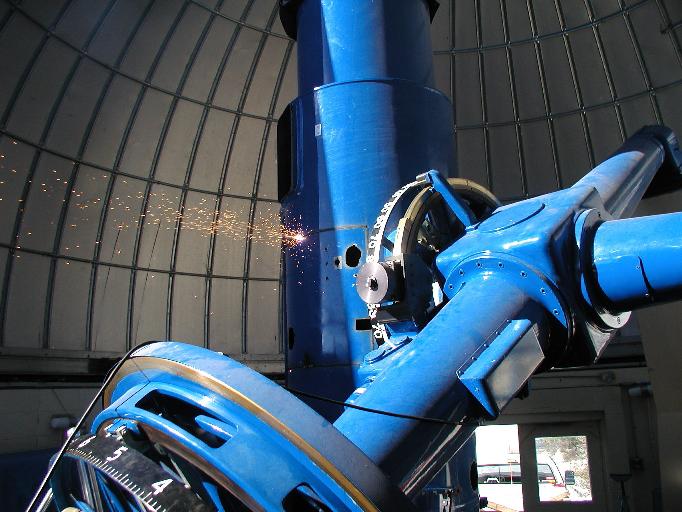
Professor Stacy McGaugh studies galaxies, cosmology, and the missing mass problem. He uses ground-based and space telescopes to study galaxies in optical, infrared, and radio wavelengths. He is interested in galaxy scaling relations (e.g., the baryonic Tully-Fisher relation; the mass discrepancy-acceleration relation) and in a class of objects known as low surface brightness galaxies. These diffuse objects tell us a great deal about galaxy formation and evolution.

Professor Chris Mihos uses observational data from ground- and space-based telescopes combined with state-of-the-art computer modeling to study the evolution of galaxies and galaxy clusters. Using Case’s wide-field Burrell Schmidt telescope, Mihos is surveying the nearby Virgo cluster of galaxies to find the ghostly intracluster light that traces the history of galaxy collisions inside the cluster. Computer simulations of galaxy clusters are being used to probe how these intracluster stars are torn out of cluster galaxies, while other simulations have focused on mergers of galaxies, the triggering of starburst galaxies and quasars, and the transformation of spiral galaxies into ellipticals. Mihos also uses multiwavelength data from ultraviolet, optical, and radio telescopes to study the evolution of galaxies, and data from the Hubble Space Telescope to probe the nature of their stellar populations.

Dr Bill Janesh studies faint dwarf galaxies in the local Universe and their stellar populations, asking how dwarf galaxies interact with large galaxies in the Local Group, and using computational methods to make astronomical data analysis more accessible and efficient. Major projects include a search for new dwarf galaxies in nearby clouds of hydrogen gas and a study of the star streams in the outskirts of the Milky Way.

Dr Tobias Mistele works on testing and developing theories of dark matter and modified gravity. Specifically, theories that can explain galaxy scaling relations such as the baryonic Tully-Fisher relation and the radial acceleration relation. His work ranges from working out what various theoretical models predict to wrestling with observational data, for example from rotation curves and weak lensing.

Professor Emeritus R. Earle Luck‘s research interests include studies of stellar and galactic chemical evolution, stellar abundance analysis, isotopic abundance ratios, spectrum synthesis techniques, and spectroscopic data reduction techniques. Recent projects include studies of local dwarfs and giants. Details on the dwarf and giant spectra along with references to the published studies can be found at the FGK Stars Spectral Library. Also contained in the Library are the Cepheid and supergiant spectra used in studies of the distribution of metals in the disk of the Milky Way.

Professor Emeritus Heather Morrison is an observational astronomer whose main research interest is the formation of galaxies. She uses observations of old stars in our own and nearby galaxies to reconstruct their history. A major project is the SDSS-II SEGUE survey for stars in the outer halo of the Milky Way, which is mapping the outer parts of the Galaxy in much more detail than previously possible, and detecting streams of stars which have been pulled off by tidal forces as small satellites are captured by the Milky Way. She also works on the formation and evolution of the Milky Way’s nearest large neighbor, the Andromeda galaxy.

Dr Paul Harding combines an interest in observations which constrain galaxy formation via the stellar fossil record with a broad background in telescope, instrument, and detector design.
